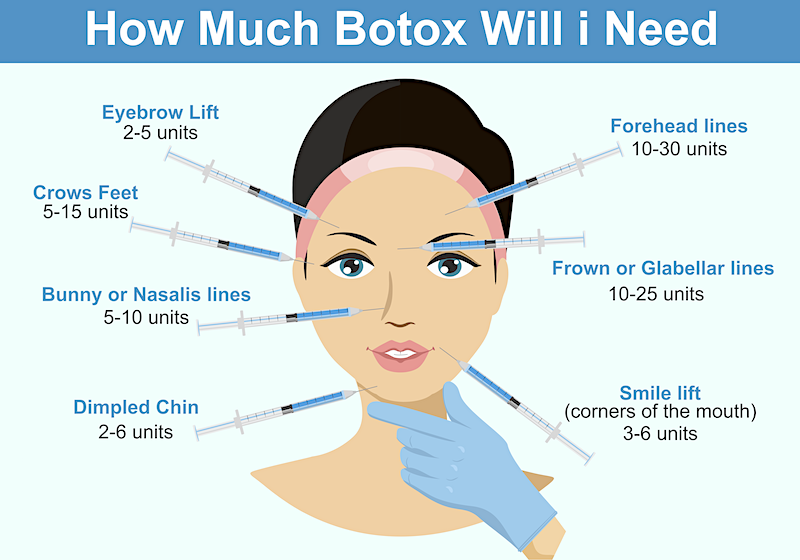 By Kamran Dastoury, MD
By Kamran Dastoury, MD
Double Board Certified Cosmetic Surgeon
Medical Director: Modern Surgical Arts of Denver
The Modern Solution to facial wrinkles
“It’s easier to prevent the wrinkles now, than to get rid of them later”
More and more people are seeking a way to slow down the aging process and maintain their youthful appearance. One of the proven methods for wrinkle prevention and treatment comes from a neurotoxin we all know as “Botox”.
Botox was originally developed by opthamologist Alan Scott in the early 1990’s, who used it as a method to relax the eye muscles of pediatric patients with vision deficits. The secret behind the magic is its ability to be injected into specific muscles in order to relax those muscles and prevent wrinkling of the overlying skin on the face. Over the past 25 years, there have been several FDA approvals for the use of “Botulinum toxin” for other medical uses such as temporomandibular disorder (TMD), sweating, achalasia (muscle spasms of lower esophagus), scar therapy, and several other medical conditions.
This product has proven its way into modern medicine and not only is it here to stay, but we are discovering more and more medicinal uses for it through research.
These days, there are several pharmaceutical companies who provide variations of this magical medicine through alteration in protein structure and synthesis method.
For my patients, I like to use the analogy of different protein supplements such as Whey Protein Concentrate Vs Whey protein Isolate. They both have essentially the same effect on the muscle, just slightly different protein structure and processing methods.
The most recognized form is Botox, made by the company Allergan. Over the years other companies have placed patents on their own versions of the neurotoxin. They all work basically the same and have the same effect.
Most of my patients ask me some of the following questions about the differences…
- Which one is more expensive or cheaper?
- Which one lasts longer?
- Which one is more natural?
- Which one do you prefer?
Here we will go through the different products we carry at Modern Surgical Arts of Denver: Botox and Dysport.*
*Technically there are 4 companies that produce a variation of the neurotoxin: Botox, Dysport, and Xeomin.
Botox or Dysport?
Wrinkle-smoothing botulinum toxin type A injections are the most common non-invasive aesthetic procedure in the US. While they all go by “Botox”, there are actually several different BoNT-A injectables that are FDA-approved for cosmetic use. Botox & Dysport are the brands that we use at Modern Surgical Arts of Denver. Each contains the same active ingredient (BoNT-A), and each is FDA approved to treat the same aesthetic conditions. The active agent for all three is identical, but each contains unique carrier proteins that diffuse through the tissue in slightly different ways. Some also feature protein blends that may affect the diffusion and efficacy of the injection. These subtle differences are precisely why it is important to find a provider who is well versed in the market.
Botox
 Known technically as onabotulinumtoxinA, it was originally developed and marketed by the company Allergan and recently acquired by AbbVie. This injectable has been officially FDA-approved* since 2002 for cosmetic purposes.
Known technically as onabotulinumtoxinA, it was originally developed and marketed by the company Allergan and recently acquired by AbbVie. This injectable has been officially FDA-approved* since 2002 for cosmetic purposes.
– Is Botox permanent?
No, Botox is effective but not permanent. But consistent use of the product over the years may extend the interval time between treatment sessions and decrease the amount of units necessary to achieve the same results.
-How long does Botox take to start working?
It takes about 7 to 10 days post-treatment for the results to appear (though it can take up to two weeks for the final effect to be visible)
– How long does Botox last for?
FDA approval for Botox is 3-4 months. Realistically, the longevity of Botox depends on several factors, from the way a patient’s body metabolizes the product to the area being treated. Clinically, for example, Botox naive patients tend to return to normal function faster than patients who receive treatment regularly.
– How many units will I need?
The amount of units varies by several factors such as injection history, how little movement the patient prefers, and patients sex. For example, clinically, men generally need more units due to thicker skin and stronger muscles to achieve the same results as women.

The best way to find out exactly how many units you need is to have a consultation with a licenced physician. They will review your medical history, listen to your desires, and provide follow-up to evaluate the results of the treatment in order to find out how many units are right for you. We can always add more Botox to reduce movement, but cannot reverse the effect.
For our new patients, I prefer to start with a lower amount and add more during the follow up visit, usually in 1-2 weeks.
– If I get Botox regularly, will I need less over time?
Interestingly, the more frequently a patient receives Botox the weaker the muscles become over the years. Herein lies the secret of cosmetic hygiene: if the muscles are weaker they will not be able to contract as much and create wrinkles on the skin.
– What if I do not want the “Frozen Look”?
For patients who do not want the “Frozen Look”, we are able to place less units into the muscles to allow more movement for a natural appearance, but still benefit from less wrinkles as well.
– What happens if I stop using Botox ? Will my wrinkles come back?
Yes, Botox is highly effective but only for a period of time. Even after several years of use the nerves controlling the muscles resume full control and function of the muscle movement, which brings the wrinkles.
– Where is Botox placed for facial wrinkles?
The major benefit of Botox is that it works on all areas, especially smaller ones, such as crow’s feet.
– What are the contraindications?
Hypersensitive reaction to Botox, pregnancy, and infection in the area of injection are contraindications. There are other cautions and warnings from the FDA. Please download and review their Botox information.
*FDA approval currently for Botox is to “temporarily treat moderate to severe frown lines, crow’s-feet, and forehead lines”.
Dysport
 Known formally as abobotulinumtoxinA, and manufactured Galderma, this injectable was FDA approved in 2009 and is used “to smooth the frown lines between the eyebrows”, according to the company’s website. Results usually show up within two to three days but can take up to a week for the full effect. It is better suited for last minute treatments because of its faster onset time and, because it travels through tissues to a slightly greater distance, it is better for treating larger areas, like the forehead. This can also mean that the injection may spread to unwanted areas and result in complications such as eyebrow or eyelid drooping, so it is better suited for broader treatment areas like the forehead. The results usually last 4 months, but in some cases it can last up to 5 months.
Known formally as abobotulinumtoxinA, and manufactured Galderma, this injectable was FDA approved in 2009 and is used “to smooth the frown lines between the eyebrows”, according to the company’s website. Results usually show up within two to three days but can take up to a week for the full effect. It is better suited for last minute treatments because of its faster onset time and, because it travels through tissues to a slightly greater distance, it is better for treating larger areas, like the forehead. This can also mean that the injection may spread to unwanted areas and result in complications such as eyebrow or eyelid drooping, so it is better suited for broader treatment areas like the forehead. The results usually last 4 months, but in some cases it can last up to 5 months.
From my clinical experience, Dysport appears to have a wider spread in the area of injection. I prefer to use Dysport for patients who have a higher hairline or taller forehead in order to cover more distance with less injections. Other injectables, such as Botox, may perform better when you’re looking to target a precise muscle like in the crow’s feet area.
It is slightly less potent than Botox because of its molecular weight and is not recommended for patients with lactose intolerance because it contains lactose and bovine milk proteins. The effects may show up faster than Botox—within 24 hours—but it may also not last as long as Botox. Dysport is usually half the price as Botox but clinically needs twice as many units to achieve the same results. Essentially it becomes about the same price as the other injectables, depending on the clinic.

Conclusion
At Modern Surgical Arts of Denver, we strive to educate our patients regarding all of the possible treatment options and assist them in finding the product that suits their needs. We carry Botox, & Dysport so patients can choose which product works best for them. Each of these neurotoxins are very similar, but the subtle differences may present better options for each individual. Consulting with an experienced board certified cosmetic surgeon will help you decide which product, how many units and which areas are to best treat your aesthetic needs. Call us with your questions at Highlands Ranch Office Phone Number 303-470-3400 or Request an Appointment.


